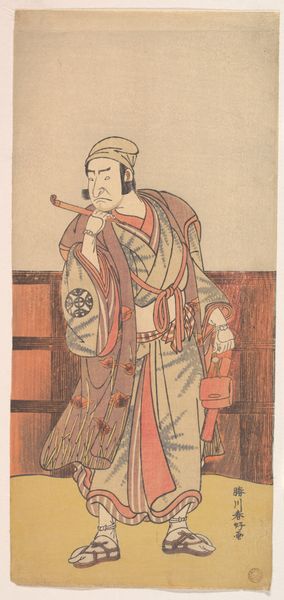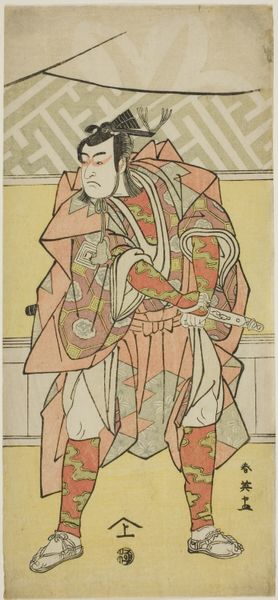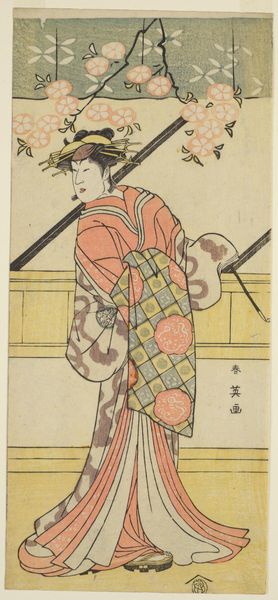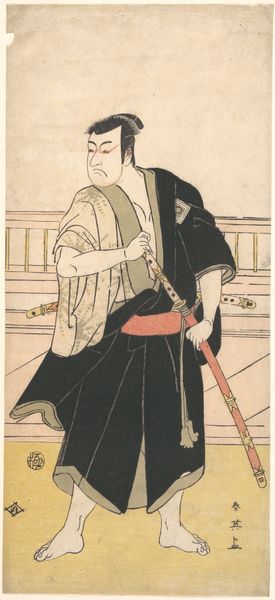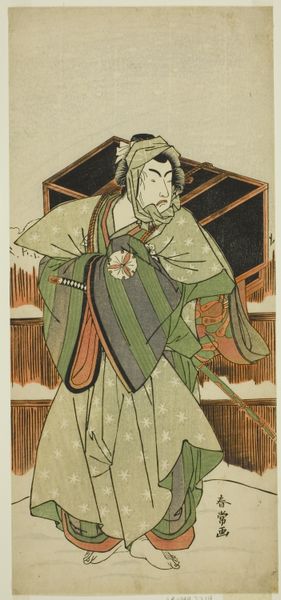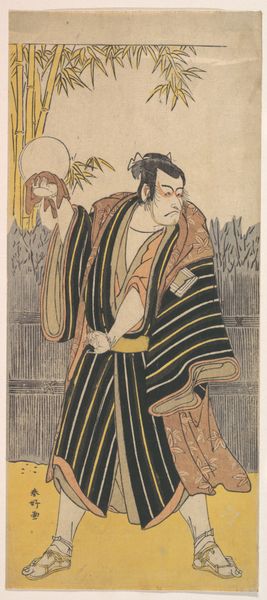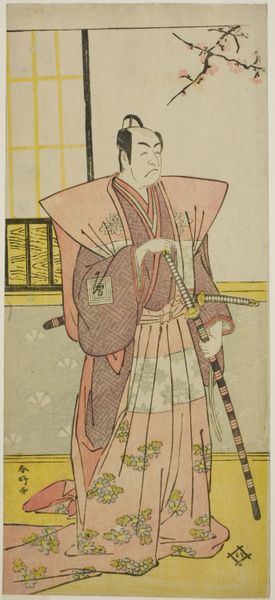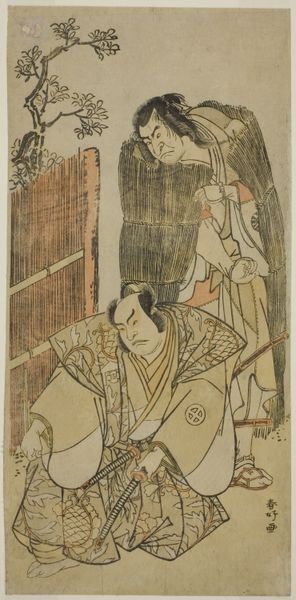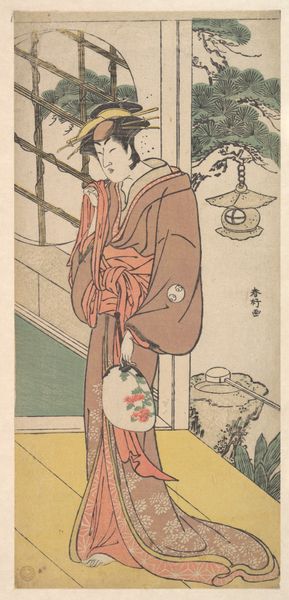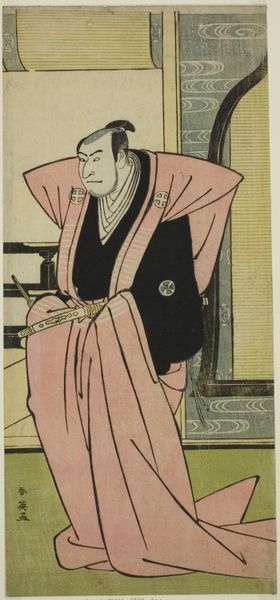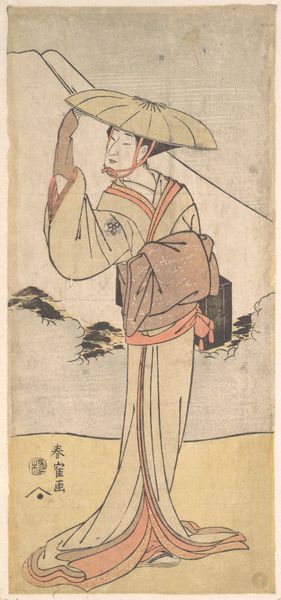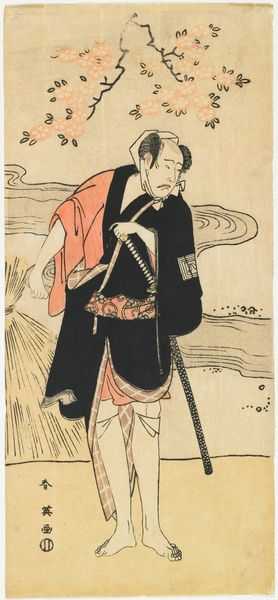
Dimensions: hosoban: H. 31.7 Ã W. 14.6 cm (12 1/2 Ã 5 3/4 in.)
Copyright: CC0 1.0
Curator: Looking at this print, it evokes the energy of the Kabuki stage. Editor: It certainly has a bold, graphic presence. The textures and layering are surprisingly complex for a print. Curator: This is Katsukawa Shun'ei's "Actor Sakata HangorÅ II in a Sukeroku Play," now at the Harvard Art Museums. It gives us insight into the popular culture of Edo-period Japan. Editor: Notice the actor's stance, the set of his jaw. You can almost feel the tension in his body. How did the artist create such depth? Curator: Shun'ei masterfully uses line and color to convey the actor's character, essential for the audiences who identified closely with these stage figures. Kabuki wasn't just entertainment; it was a mirror reflecting society. Editor: And that striped cloth he's holding – the details in that material alone speak volumes about textile production at the time. Curator: Absolutely. The materials used in Kabuki, like that cloth, were highly regulated and symbolic, reflecting the social hierarchy and sumptuary laws of the era. Editor: I came away thinking about the artist's skill, translating the ephemeral energy of a performance into a lasting image. Curator: And for me, it's how the print preserves a moment in history, a performance, and its social context for audiences today.
Comments
No comments
Be the first to comment and join the conversation on the ultimate creative platform.
